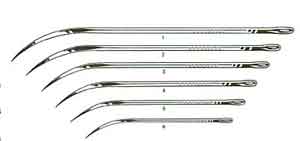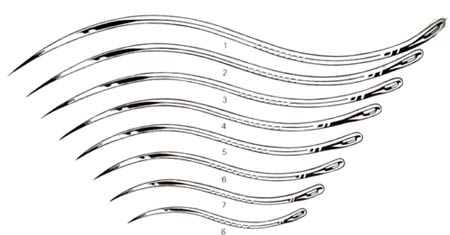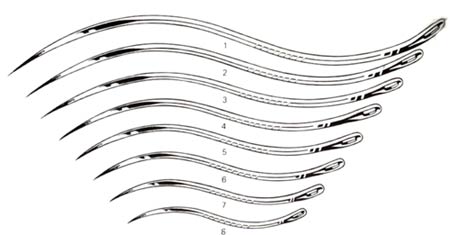Home » Surgical Instruments, Medical Surgical Supplies & Equipment » The Science Behind Post Mortem Needles » The Science Behind Post Mortem Needles
The Science Behind Post Mortem Needles

Post Mortem Needles, Half Curve Cutting Edge, #4
Retail Price: $30.80
Your Price: $23.10
 Unit: single
Unit: single

Post Mortem Needles, Double Curve Cutting Edge, Size 2
Retail Price: $20.92
Your Price: $15.69
 Unit: 12/box
Unit: 12/box

Post Mortem Needles, Double Curve Cutting Edge, Size 8
Retail Price: $20.92
Your Price: $15.69
 Unit: single
Unit: single
Medical equipment continues to evolve over time as new technology and techniques come to the forefront in all areas of practice. With new advances in forensic sciences even the humble post mortem needle has advanced in its design, construction material and even in the ways in which it is used. While certainly common in morgues and forensic examination facilities these needles are also a key instrument in the embalming process as well.
In general post mortem needles are larger and heavier than standard needles used for suturing. They are designed to match a heavier type of thread that is strong and durable for suturing large incisions through the chest and abdomen after the forensic examination is complete. With different sizes and curvature on the needles the examiner or technician can choose the right needle for the incision size and the number of sutures that have to be completed. While overall appearance of the suture work is not necessarily the goal it is essential that the sutures be durable and provides a tight closure. Often the body will be turned over immediately to the funeral home and there will be no additional suturing, particularly if the medical examiner has done a thorough job of returning the body to the original state.
However, in some areas post mortem needles are also used to biopsy patients. In a recent study completed in 2010 in low socio-economic countries that were predominantly Muslim it was found that post mortem needle biopsies would be acceptable, even with religious concerns about examining the body after death. The research paper, published under the title "Family and Community Concerns about Post-mortem Needle Biopsies in a Muslim Society" indicated that this could be a culturally acceptable way to gather data on outbreaks that could improve public health while preserving religious beliefs about the negative aspects of autopsies.
Post mortem needle biopsies are not considered superior to a full autopsy, but they do allow medical information to be collected and data analyzed in situations where getting consent to complete a full autopsy would not be possible. In these cases large sized post mortem needles are used to extract small tissue samples from selective areas of the body. This could include tissue collection from various organs including the brain, liver and the lungs or other organs that may be impacted by the virus or disease.
Other advances in the specific design of post mortem needles have increased the lifetime use of the needles themselves. Cutting needles provide the option to have a stainless steel bland mounted in the thicker handle or grip part of the device. This serves as a handy additional feature on the needle itself, saving in the number of tools needed during the process.
Half curve or double curved post mortem needles come in a variety of sizes. This allows the technician, doctor, mortician or medical examiner to have the correct size on hand. These needles typically have a standard eye to handle post mortem threat as well as a cutting edge on the needle itself. Additional features that can make using the needle much easier include a series of ridges on the curve of the needle that enhance finger grip without bulking up the needle diameter. Double curve needles make a flattened S shape and come in sizes 1 through 8. Half curve needles have the straight shank with a curve on the tip, allowing for easy and consistent suturing.
Although post mortem needles may not be the most costly or most important equipment in the room, the increasing diversity of use for these needles makes them an important consideration with any budget. Having a variety of different sizes and types of needles on hand definitely will make work easier and much more efficient.














